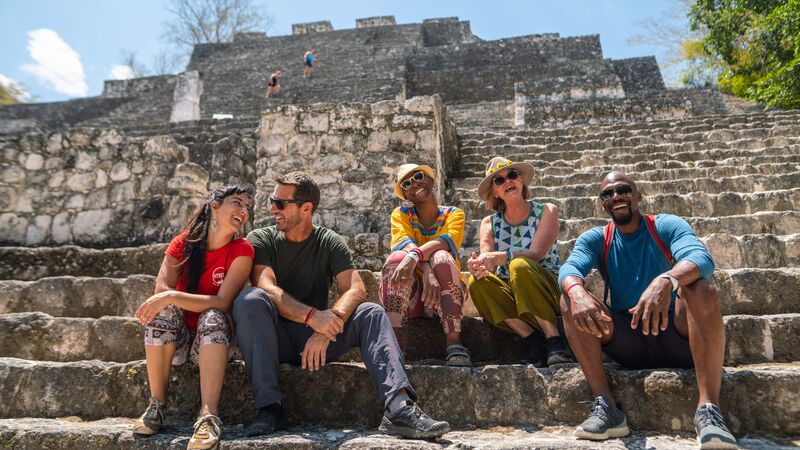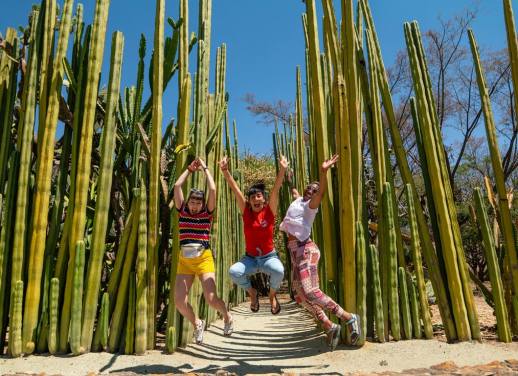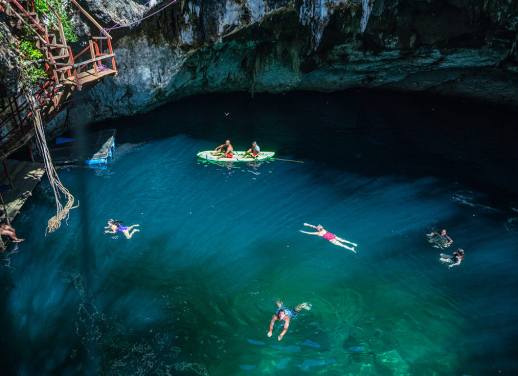You could spend a lifetime exploring Mexico’s ancient ruins and still not see them all.
Open air museums spanning the length and breadth of this fascinating country, no trip is complete without visiting at least one of these archaeological wonders.
What are the differences between the ancient Mexican cultures?
The Mesoamerican civilisations that developed in Mexico in pre-Columbian times had many cultural similarities – such as building temples and pyramids – but were distinct peoples. The Olmecs were found along the Gulf Coast around modern-day Veracruz, the Zapotecs were in the southern Oaxaca region, the Aztecs ruled much of central and southern Mexico, while the Mayas stretched over the south east, such as the Yucatan Peninsula and into Guatemala, Belize, El Salvador, and Honduras.
EXPLORE OUR FULL RANGE OF SMALL GROUP ADVENTURES IN MEXICO NOW
Can I climb the ruins?
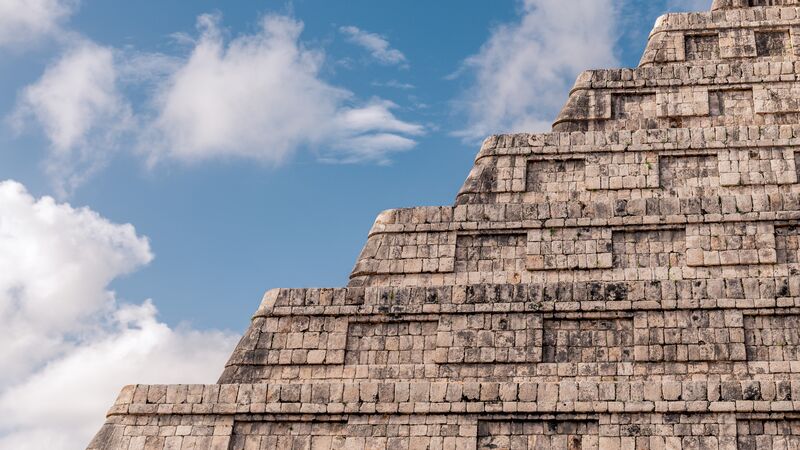
Photo by Nathan Landers.
Generally yes, although it depends on the site. Perhaps the best known, Chichen Itza, stopped allowing climbing several years ago due to a number of tourists falling and injuring themselves. If in doubt, always ask before climbing.
RELATED: 5 REASONS WHY MEXICO IS THE ULTIMATE SOLO TRAVEL DESTINATION
 What do I need to be mindful of when visiting these sites?
What do I need to be mindful of when visiting these sites?
There will be a bit of walking and climbing involved, so bring water, sensible shoes, and some sun protection. These are historic and protected sites, so be respectful. Pay attention to any sign posts or guides telling you not to enter or climb an area – you’ll be swiftly kicked out if you do something you’re not supposed to.
What are the best ruins to see?
1. Calakmul
This is one you probably haven’t heard of. Buried deep in the wildlife-rich jungles of the central south Yucatan are the ruins of Calakmul. This ancient Maya city and World Heritage-listed site – parts of which are over 2,000 years old – played an integral role during the rule of the Maya empire and was archenemy to nearby Tikal. Almost 7,000 structures remain today, including three pyramids which ascend dramatically above the canopy. One of these, known as ‘Structure 2’, is over 45 metres high, making it one of the biggest and oldest Maya pyramids in the world. And yep, you can climb it! Calakmul is far from everywhere (over six hours drive from Tulum), but it’s worth the hike… you’ll barely see another tourist during your visit.
CLIMB CALAKMUL ON OUR 8-DAY YUCATAN PENINSULA ADVENTURE
2. Teotihuacán
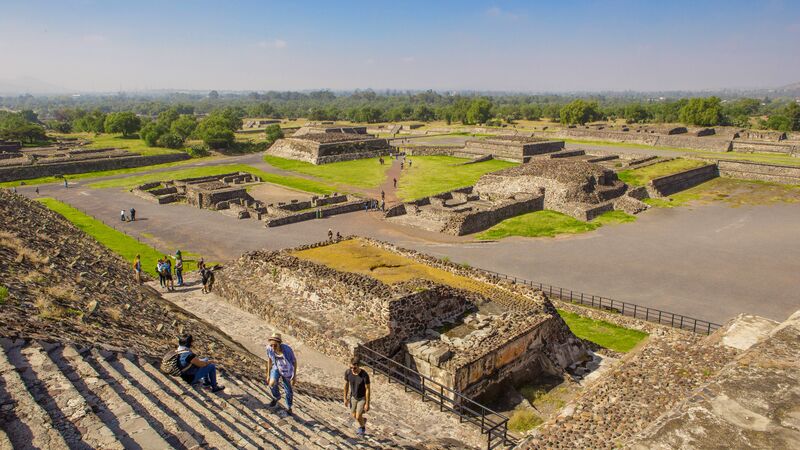
Photo by Damien Raggatt.
It’s only 50 kilometres from Mexico City, but a journey to Teotihuacán will take you to another world. At its peak between 100 BC and AD 650, the city was thought to be home to 100,000 people, and was probably the largest city in the western world until the 1400s. Scholars still debate which people actually built the city, but the Aztecs came upon it much later and named it Teotihuacán. The ruins feature two towering pyramids, known as the Temple of the Moon and the Temple of the Sun. Walk along the Avenue of the Dead and gaze up at them, before taking to the stairs for a short but steep climb to the top, where it feels like all of Mexico stands before you.
VISIT TEOTIHUACÁN ON OUR 15-DAY BEST OF MEXICO SMALL GROUP ADVENTURE
3. Chichen Itza
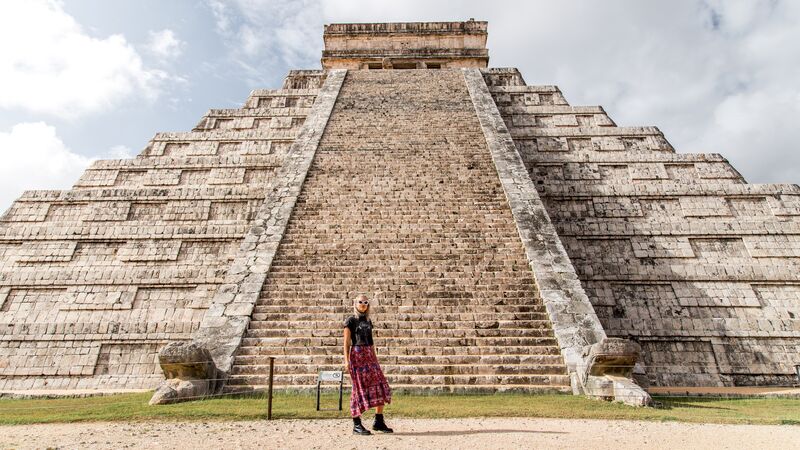
Photo by Nathan Landers.
The striking architecture of the Maya civilisation of Chichen Itza saw it named among the New 7 Wonders of the World in 2001. Living between around 250 AD to 900 AD, it is known for the sophisticated society that ruled it, with a written language, astronomical discoveries, and architecture. The people of Chichen Itza built monuments to celestial happenings, many of which you can see among the ruins today. Probably the busiest of all of Mexico’s ruins, there’s never a shortage of tourists around, but covering five square kilometres, there is plenty of room to spread out and explore the fascinating networks of observatories, ball courts and temples.
CHECK OUT CHICHEN ITZA ON OUR 8-DAY YUCATAN PENINSULA ADVENTURE
4. Palenque
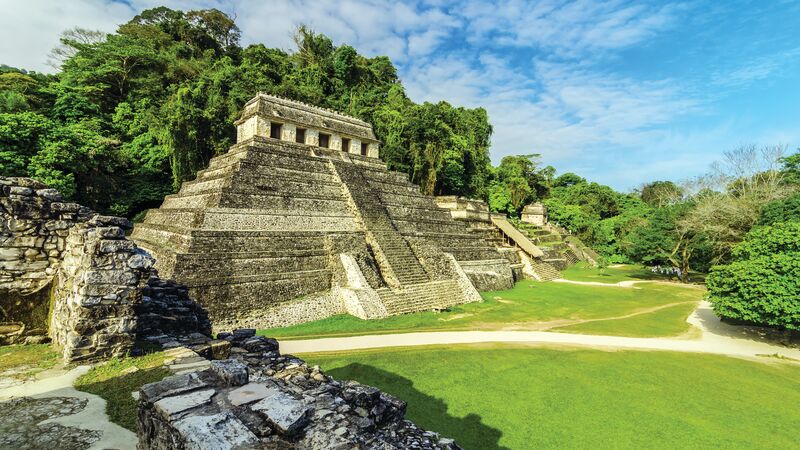
Photo by Jess Kraft.
Much like Egypt’s pharaohs, the Maya rulers of Palenque built tombs deep within their limestone pyramids. One of them, King Pakal, was buried in a chamber in 683 AD, and was only discovered in 1952. Lying within a jungle in Chiapas, it has been excavated and restored to one of the most photogenic of Mexico’s ancient sites. Enjoy the welcoming committee of monkey and parrots, and make your way into the Temple of the Inscriptions, where Pakal’s crypt lies.
5. Tulum
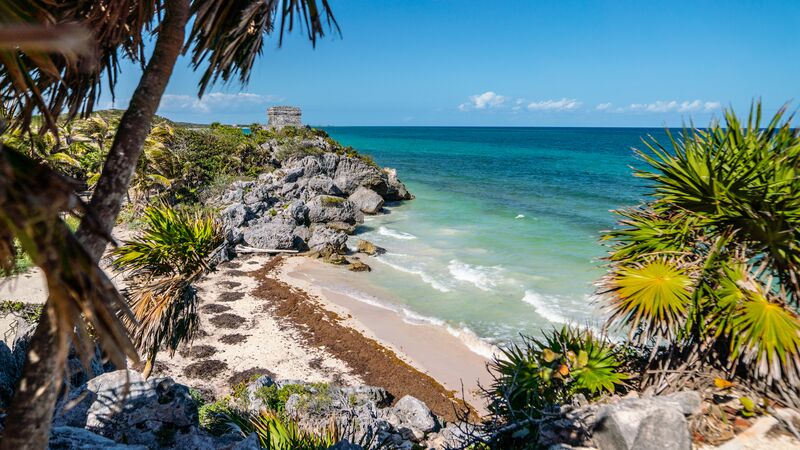
Photo by Ben McNamara.
While small compared to nearby sites on the Yucatan Peninsula – and only one tenth remaining of the ancient city itself – Tulum’s ruins sit clinging to some of the country’s most beautiful coastline. The modest structures were built much later than the likes of Chichen Itza, but what they lack in grandeur they more than make up for with that location. Arrive before the morning sun to see it rise over the ruins; you may even have them entirely to yourself to explore.
CHILL OUT IN TULUM ON OUR 13-DAY GUATEMALA TO MEXICO ADVENTURE
6. Monte Alban
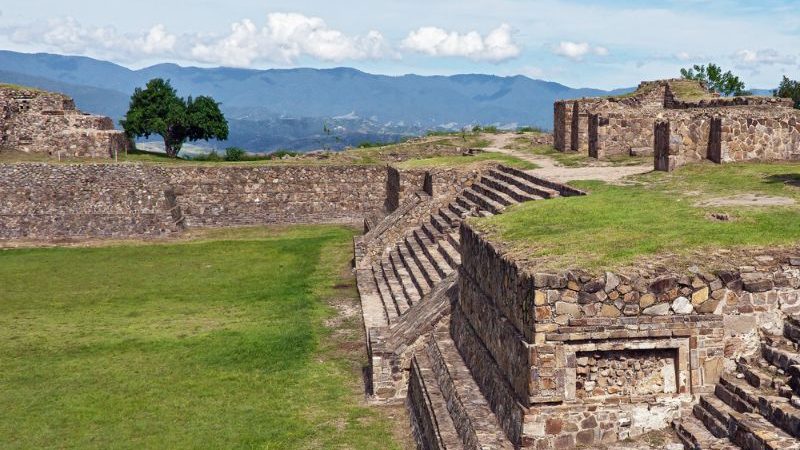
Photo by Vadim Petrakov.
Just west of the city of Oaxaca, this site was once the capital city of the Zapotecs before being taken over by the Mixtec people. Thought to have been established around 500 BC, and lasting for 13 centuries before being abandoned for reasons unknown, the ruins feature an irrigation system as well as signs of trade. Today, the baroque tombs and palace (with evidence of hieroglyphs) is a UNESCO World Heritage site.
MOSEY AROUND MONTE ALBAN ON OUR 9-DAY REAL FOOD ADVENTURE
7. Mitla
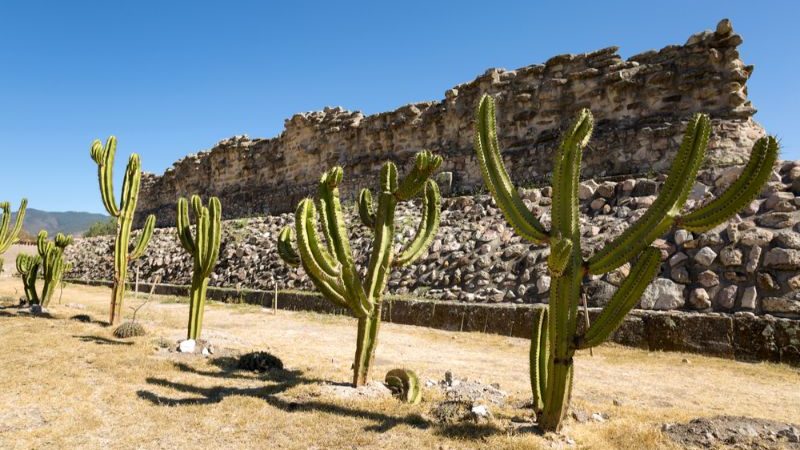
Photo by Barna Tanko.
Southeast of Oaxaca, Mitla was the Zapotec’s capital after the more spectacular Monte Alban. Mitla has a lot going for it, with quadrangle buildings surrounded by chambers with low roofs, but it is somewhat overshadowed by a living witness to this former civilisation. The famous ‘El Tule’ tree, on the road to the ruins in the nearby town of Santa Maria, is thought to be 2,000 years old.
WANDER AROUND MITLA ON OUR 15-DAY REAL MEXICO ADVENTURE – FOR 18 to 29-YEAR-OLDS
Want to explore Mexico’s incredible ancient sites? Check them out now on a small group adventure with Intrepid.
Feature photo by Ben McNamara.

